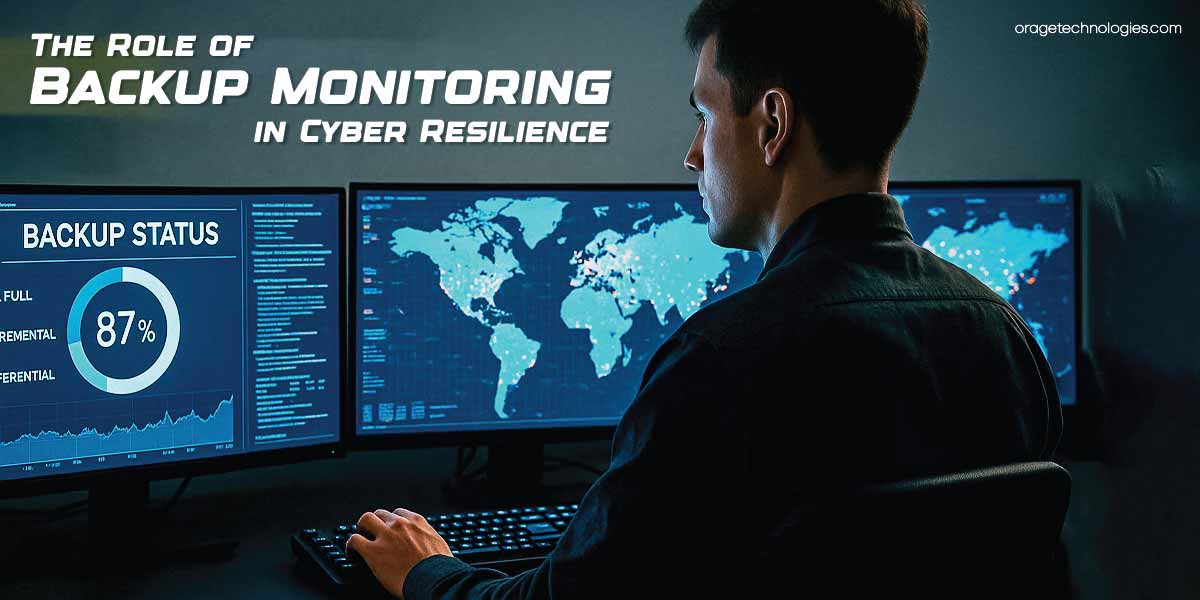
Rahul Beniwal, with over 15 years of experience under his belt- in software development, cloud infrastructure, product management, and systems architecture. These experiences have helped...
Cyber resilience is essential for every IT system, critical infrastructure, society, business process, organization, and nation-state. But cyber resilience doesn’t mean having more data copies. It includes knowing your backup is safe, untouched, and recoverable when everything goes wrong. It also includes backup monitoring as a core layer in your defense, not as an afterthought.
Gaps in Traditional Backup Validation
Most organizations still think “backup completed” equals “we’re covered.” But that green checkmark can be deeply misleading.
Modern attackers don’t always target your primary data; many target the backup systems. Why? Because they know that if they wipe out your recovery, your only option is to pay up or start from zero.
Attackers spend weeks watching how your backups run. Once they understand the timing, they inject corrupted data or delete older snapshots. Everything looks fine on the surface. But when it’s time to restore, you’ve got nothing.
Monitoring for Backup Integrity
Having backups in multiple locations helps. Air-gapped storage adds another layer. But if you think that’s enough, you assume all copies are clean.
Many backup tools replicate corrupted data across systems without flagging it. The logic is simple: if the job runs, it reports success. However, no one checks whether the replicated data makes sense or whether it was compromised before the sync.
This is why backup monitoring that verifies integrity, not just job status, is essential. You want something that checks for file-level changes, unexpected compression, sudden shifts in data volume, or missing objects.
Identifying latent Corruption
Incremental backups are efficient but risky. A minor corruption early in the chain can poison everything that follows. You won’t notice it unless you regularly test restore points or run deep integrity checks.
Unfortunately, most teams don’t. They find out when a recovery fails during an incident. And at that point, it’s too late to go back.
To prevent this, schedule restore tests as part of your routine. Even better, use monitoring that runs periodic hash verification across older snapshots. This helps you catch silent failures before they eat into your recovery window.
Prioritizing Recovery Point
If a backup misses one run, it might be noise. But if the data size suddenly drops by 70% compared to last week, that’s worth digging into. These subtle changes hint at deeper issues like files being deleted before backup or someone quietly disabling part of the process.
You want alerts based on behavior, not just success or failure. A good backup monitoring tool will let you set thresholds for pattern changes. It should also tell you when a job looks “off,” even if it is completed.
Countermeasure Against Insider Threats
Not all threats come from outside. Misconfigurations, careless access, and even malicious insiders can damage backup systems.
Someone with admin rights can delete backup jobs, modify schedules, or skip critical folders intentionally or accidentally. If there’s no monitoring in place, those changes go unnoticed. That’s why audit trails matter. You need clear logs of who did what, and when. Monitoring tools should capture every policy change, every failed job, and every manual action. Role-based access should limit who can make changes in the first place.
Linking Backup Telemetry with Broader Incident Detection Systems
Backup systems don’t exist in isolation. Your backup telemetry should be part of that data stream if your organization uses SIEM or SOAR platforms.
Think about it this way: backup behavior often changes if you’re under attack. Data might shrink. Jobs may start failing more often. Or someone might tamper with retention policies.
If you can correlate those signals with alerts from your endpoint detection system or firewall logs, you can spot an incident much faster.
Measuring Backup Resilience
Don’t wait for something to break before you assess resilience. Track the right things early.
Start with the restore success rates. Then look at the time-to-restore metrics from your test runs. Track false positives in alerts, backup job anomalies, and how quickly your team responds to failed tasks.
These numbers tell you if your system can hold up under real stress. They matter far more than “number of backups completed.”
Conclusion
Backup monitoring is part of your cyber defense. It needs to be running constantly. It needs to talk to your threat detection tools. Someone needs to look at the data regularly, not just when something breaks.
You can’t treat backups as a once-a-week task. You need real-time visibility, behavior-based alerts, regular restore testing, and deep logging.
Because when an attack happens, your backups will be the only thing standing between you and total shutdown.
Also Read: Why Should We Use Antivirus Software?

Rahul Beniwal, with over 15 years of experience under his belt- in software development, cloud infrastructure, product management, and systems architecture. These experiences have helped him design scalable solutions and businesses. He’s lived the highs and lows of entrepreneurship, guided teams through growth and change, and stayed curious about how technology continues to shape the way we work and live. In his writing, he blends deep technical insight with real-world business know-how, offering readers tools and perspectives that come from actual experience.
More Posts

